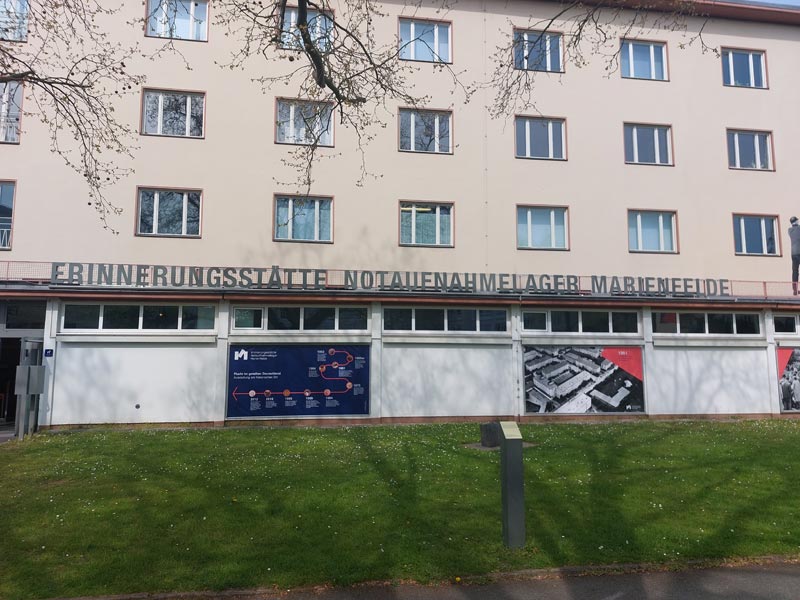April’s research involved visiting the Marienfelde Refugee Center in Berlin where 1.3 million people passed through between 1953 and 1990 as a necessary step in their journey to become free and legal West German citizens. The Center became necessary and funded by the West German government after the East German government sealed off the intra-German border in May 1952. Because of this action, Berlin became the only the only possible escape to the West, and in 1953 alone, over 300,000 people escaped via that route. However, after the East Germans built the Berlin Wall in 1961, traffic to Marienfelde is halted until the 1980s when exit visas are issued to East Germans again and more people go to the refugee center where the occupancy rates rise to a peak in 1989. This exodus comes to an end with German reunification. Until 2010, the former emergency refugee camp served as Berlin’s reception center for ethnic German migrants. Today it provides transitional accommodation for refugees around the world.
Although the West German government provided shelter and care for the refugees at Marienfelde, the process of becoming a recognized political refugee proved to be a lengthy and cumbersome process that involved among other things, a physical exam, and multiple interviews with governmental agencies that often-lasted weeks or months. While it was not a criminal offense to bypass the Refugee Center when fleeing the East, the government only granted residence permits to live in West Germany to those who had completed this burdensome step. Official recognition brought significant benefits including a right to housing, and help finding work. The West German government often flew the new citizens to their new homes in another party of Germany.
The illegal applicants, or those applications which had been denied were not given any help settling into society. Anyone who could satisfy the assessment committees that he or she had fled from danger to life was granted the legal status of a political refugee. West Germany had to be especially strict about whom and how many refugees they could allow into the country because there were limited resources, and in addition to those attempting to flee from East Germany, millions of Germans that had been expelled from other European countries following the war had to be assimilated and accommodated as well. Additionally, and perhaps more importantly, the West German government hoped to weaken the East German government and wanted its political opponents to stay there and only seek refugee in the West in emergencies, which they defined that only those who were politically persecuted.
Today, the center is a nice museum, free to the public. One can hear stories of families that spent time in the center, see witness memorabilia such as suitcases, dolls, and a canoe someone had used to cross a canal and other interesting artifacts. There is also a unique display on the price artists such as Wolf Biermann and Rolf Schneider paid for their choices to leave. However, the most telling thing was an exhibit on the Stasi.
In 1989 the public learned for the first time the extent of the information accumulated by the Stasi. During the Cold War, they spied on approximately 6 million East Germans and thousands of West Germans. Records take up over 111 miles of space and gave insights into private lives of those observed and also made it possible to unmask one time informants. In 1991 the German Parliament passed a law which laid down the process for dealing with information collected from the Stasi, which among other things gave individuals the right to access their files.
https://www.stiftung-berliner-mauer.de/notaufnahmelager-marienfelde


Recent Comments